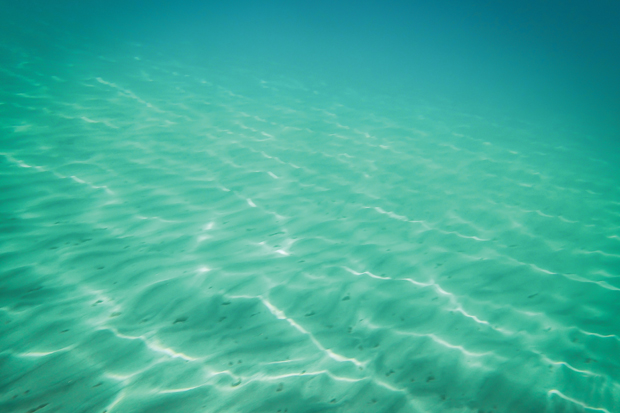Open Water Swimming

Marathon swimmer and record holder Lynne Cox has been a pioneer in conquering some of the coldest, most dangerous waters in the world, including the Bering Strait and, perhaps most impressively, the freezing waters of Antarctica. In her latest book, Open Water Swimming Manual: An Expert’s Survival Guide for Triathletes and Open Water Swimmers, Cox imparts her knowledge and years of experience to athletes who are just delving into the world of open water swimming, as well as to seasoned swimmers who are looking to challenge themselves.
Cox offers several drills to help open water swimmers work on their technique; two of them in particular are geared toward developing better breathing techniques in choppy water. Depending on the conditions of the day, open water swimmers who favor breathing on only one side may find themselves with a mouth full of water each time they turn their heads for air. By practicing both bilateral breathing and turning their heads to the side without breathing, says Cox, swimmers can be better prepared for wind chop and avoid disrupting their stroke.
Whether you are working to improve your open water skills or are simply looking to better your technique, try the following drills from Cox’s book to work on side-to-side (bilateral) breathing:
Bilateral Breathing Drill Method
• Lie on your right side, as if you are going to swim the sidestroke, with your right arm extended above your head and the other arm resting on your side.
• Put your face in the water and blow bubbles. Take a breath when needed.
• Kick six to eight times on your side.
• Take a stroke with your left arm and use the core of your body to roll all the way over to the other side of your body. Make sure you are using your core to roll over. You will get a lot of power and strength from your core.
• With your left arm extended, let your right arm rest on your side as you kick on your side six to eight times with your face in the water.
• You want to maintain a straight line in the water. Usually, swimmers are more balanced on one side than the other. Sometimes it takes a little more concentration and work on balance to kick on one side as opposed to the other. But this exercise will help you balance your stroke and also swim in a straighter line. It is easy to see which swimmers in the open water have a balanced stroke. Those who are not balanced will swim in the direction of their dominant side, off to the right or the left, and not maintain a straight line.
• This drill will also help you maintain a horizontal position and enable you to move efficiently through the water. You will be rotating from one side of your body to the other and reinforcing that your arm stroke is done in conjunction with the rotation of your body, so that you are pulling with your core as well as your arms. If you do not use your core with your arm strokes, you will not swim efficiently. You will be swimming flat on the water, and if you are using only your arms, the muscles in your arms will fatigue more rapidly and you will tire sooner.
• This drill will also help you develop a stronger core and arms and legs, which will help you increase your power, speed, and endurance when you are swimming.
Breathing and Breath-Holding Drill
• Swim freestyle two hundred strokes and breathe every three strokes to warm up.
• Swim freestyle one hundred more strokes at your pace, and breathe every third stroke. Every once in a while, turn your head to breathe on the third stroke without actually taking a breath. Take a breath on your fourth stroke.
• Make sure that you are doing this drill with a buddy, so he or she can check on you to make sure you’re okay and check for boat traffic. If you suddenly find you really need to breathe on the third stroke, take a breath. The point of this drill is to learn how to avoid breathing in water.
• Swim one hundred more strokes and repeat this drill.
• Once you feel comfortable changing your breathing pattern, swim in mildly choppy water. As you gain more experience and confidence, you will be able to feel the waves around your head and judge the times when you can take a breath and when you’ll have to wait and turn to the opposite side to breathe.
• For intermediate and advanced swimmers: There are times when the wind and waves are so large that it’s impossible to breathe on one side of your body. Breathe on the side you can get air, and have someone in kayak or boat, or on a paddleboard beside you, guide you and be there for safety.
Not only will practicing these drills develop your technical swimming skills, they will gear you up mentally for your swim as well. By preparing ahead of time for the many different water conditions you may encounter, you will be less likely to get taken by surprise on race day—and thus more likely to stay in your groove.
Congrats to all of the open water swimmers who recently participated in the Colin’s Hope Got2Swim Lake Austin 10K and 10-mile event. Approximately 100 swimmers and water guardians traversed Lake Austin on August 29 in honor of the memory of Colin Holst and to promote water safety awareness. For a complete recap of the swim, visit the AFM blog (austinfitmagazine.com/topic/blog/).
Excerpted from Open Water Swimming Manual by Lynne Cox. Copyright © 2013 by Lynne Cox. Excerpted by permission of Vintage, a division of Random House LLC. All rights reserved. No part of this excerpt may be reproduced or reprinted without permission in writing from the publisher.






